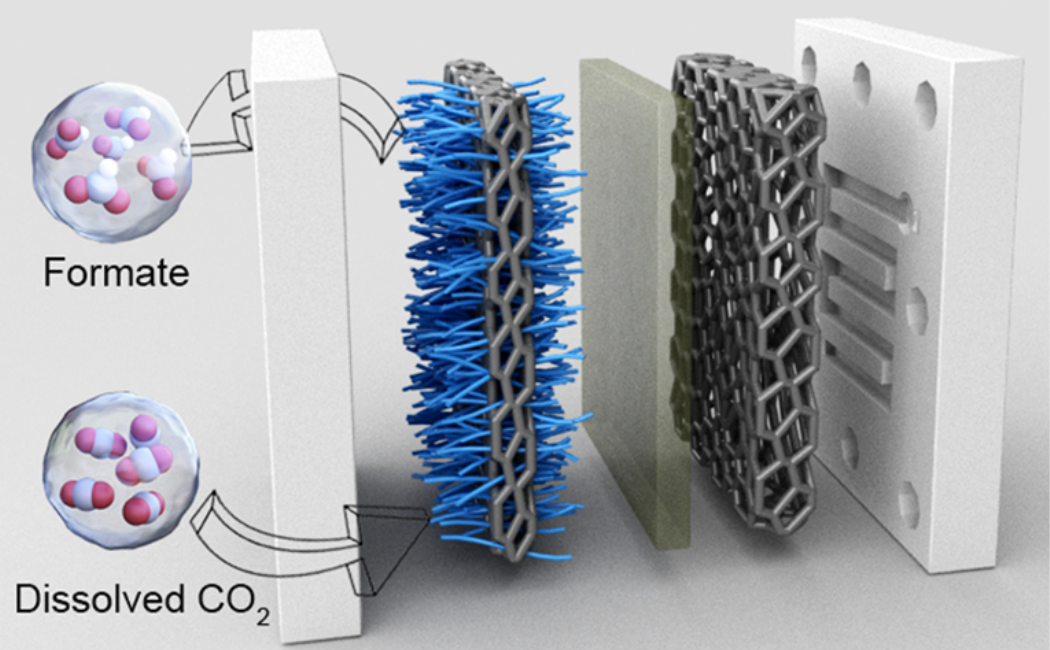

LATEST
NEWS

03 September, 2023
Under specific pressurized conditions, carbon dioxide can be catalytically transformed into formate in a high-pressure narrow-gap aqueous flow cell. Copyright © 2023, Huang et al.
Captured carbon dioxide emissions could be turned into valuable chemicals through a selective process driven by renewable electricity. CO2 can be electrochemically converted into a particular product by running the reaction under high pressure.
“In my research, we use electricity to convert CO2 into fuels,” says Xu Lu, a mechanical engineer from KAUST. The team explored a process called electrochemical CO2 reduction (CO2R), which can turn the waste gas into various potential fuel molecules. Depending on the catalyst used, products including formate, methanol and ethanol can be generated.
Until now, most studies have explored CO2R under ambient pressure conditions. However, in industry, CO2 is typically captured, transported and stored under high pressure. “Since industrial CO2 sources are often pressurized, the direct electrochemical reduction of high-pressure CO2 would be of significant value to industry,” says Liang Huang, a postdoc in Lu’s group.
So Lu, Huang and their collaborators examined what happens when the reaction is run at a pressure of 50 bar, which is more typical of industry conditions. The outcome of the reaction was altered significantly at this pressure.
“To our surprise, we found that catalysts including copper, silver, gold and tin, which exhibited different CO2R selectivities under ambient pressure, all became selective for formate production at high pressure,” Huang says. Converting CO2 into a single product is more useful than generating a mixture.
Understanding reaction processes taking place inside a high-pressure reactor is not trivial because most analytical techniques operate at ambient pressure. To examine the reaction outcome, Lu’s group collaborated with Gaetano Magnotti, who specializes in advanced laser diagnostics and imaging to study high-pressure combustion processes. “We used the high-power system to shoot a laser into our high-pressure electrochemical reactor,” Lu says.
Read more at KAUST Discovery.